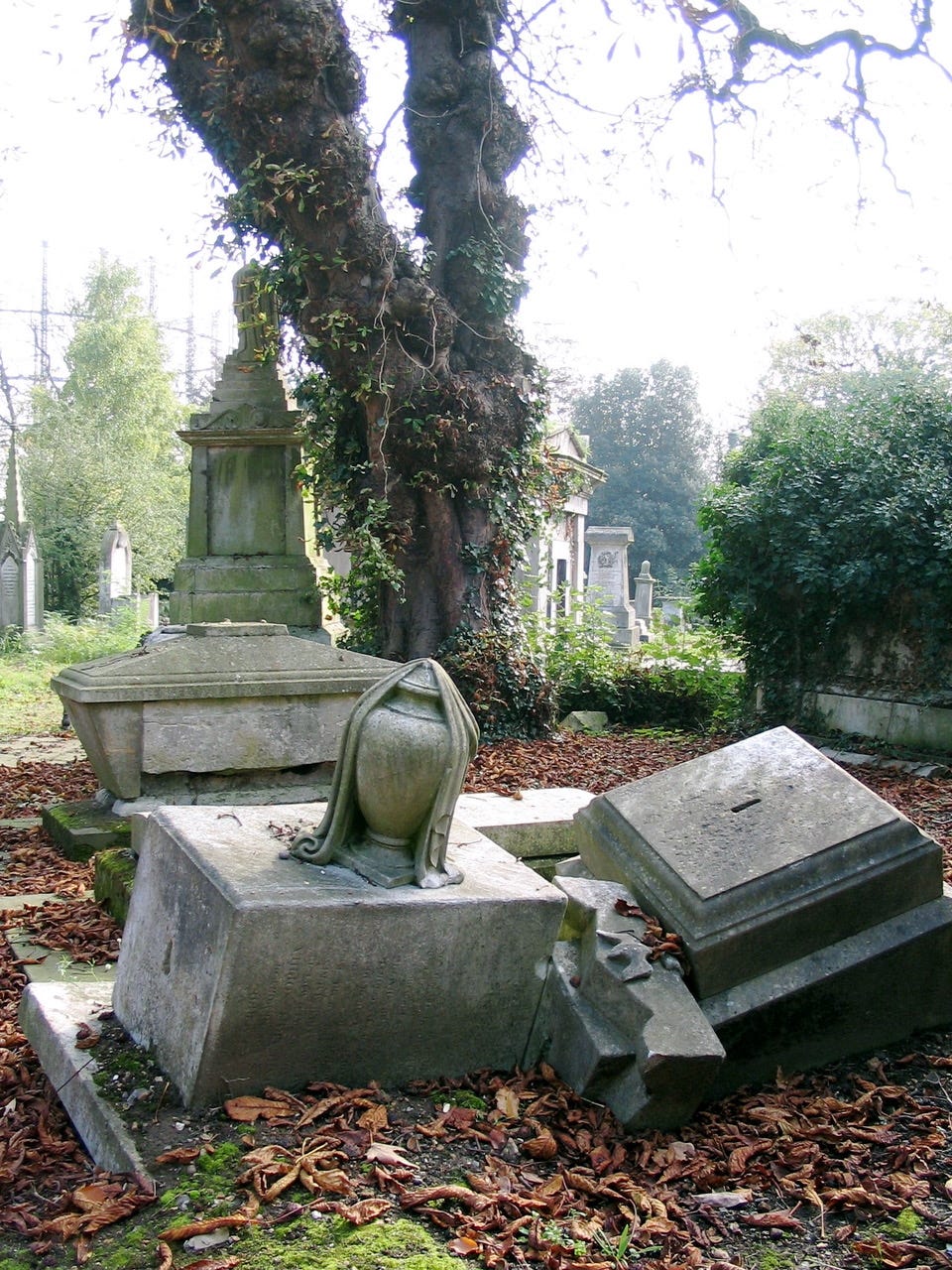The Endgame
Newsletter #101 - A visit to Kensal Green Cemetery: guest column by Marian Botsford Fraser
Vancouver, April 13, 2025
A visit to Kensal Green Cemetery, by Marian Botsford Fraser. Her books include Requiem for My Brother and Walking the Line: Travels Along the Canadian/American Border.
Jane, Lady Franklin (1792-1875) lies in a crypt in the catacombs beneath the Anglican Chapel in Kensal Green Cemetery in northwest London.
Kensal Green Cemetery was incorporated in 1832, the first private and then pastoral alternative to the crowded crypts and yards of London’s churches. Its 54 acres were divided unequally (39/15) between the High Anglicans and the Dissenters. Each sect was given its own Greek Revivalist chapel, Doric and Ionic respectively. Two of George III’s children were buried here, leading the way for eminent, moneyed Victorians to buy plots; they included novelists Thackeray, Trollope and Wilke Collins, Arctic explorer Sir John Ross, tightrope walker Blondin, politician Wyndham Lewis. More recent residents include Winston Churchill’s infant daughter and playwright Sir Terrance Rattigan. The day I was there in 2005, black-veiled women were sobbing over fresh, shiny black gravestones decorated with bright pink artificial flowers in plastic pots. Not remotely High Anglican.
Despite the stature and familial wealth of some of its inhabitants, Kensal Green is remarkably unkempt. It has a wild, defiant beauty, unmown, its many flowering trees rampant and unpruned. Off the central, gravelled avenues, its myriad paths are overgrown; wildlife-friendly-habitat has usurped stately-home-formal-garden as the prevailing aesthetic. (Money may be an issue at “London’s foremost necropolis”; the catacombs in 2005 were only three-quarters full with room for another thousand coffins. The current fee for a “front row” adult burial plot (not including digging fee, no caskets permitted) is £27,000 (CAD $50,000).)
Lady Franklin was wise to choose a crypt; graves above ground at Kensal Green have not been treated kindly by time. The mindless vandalisms of man and weather have left their mark. The wings of exuberant angels are broken, the heads of horses lopped off, cherubs noseless, busts headless, urns smashed. Words immortalizing the beloveds of poets and kings have faded from the granite into which they were once deeply carved. In places it seems that the earth itself has erupted, tossing up an austere Portland stone monument, or a marble corner has broken off and it’s shockingly possible to peer into a black interior. Obelisks tilt and sarcophagi are oddly askew; the Book of Revelations comes to mind. Did corpses roll over in their graves, causing unseemly ruptures on the surface? The turmoil is unsettling.
Lady Franklin resides undisturbed on a shelf in her lead-lined casket. But the posthumous fate of her beloved husband, Sir John Franklin, is unknown. Since 1847, when his expedition of two ships and 128 men seeking the Northwest Passage had been unheard from for two years, the search for Franklin has been the obsession of explorers, scientists, adventurers, writers and, ferociously and famously, Lady Franklin herself. By 1854 the fate of some of Franklin’s men was known, their bones and relics strewn down the bleak coast of King William’s Land, south of where the prophetically named ships, Erebus and Terror, were beset in ice for at least nine months. A note about Franklin’s own death, aboard ship on June 11th1847, was scribbled onto an Admiralty form letter, rolled into a small tin cannister and tucked into a cairn of rocks.
When all were declared officially dead in 1854, Lady Franklin turned her attention to preserving her husband’s honour and reputation. His status was made irrevocable (by standards of the day), carved into a tall Waterloo Place monument: “FRANKLIN. TO THE GREAT NAVIGATOR AND HIS BRAVE COMPANIONS WHO SACRIFICED THEIR LIVES IN COMPLETING THE DISCOVERY OF THE NORTH-WEST PASSAGE…ERECTED BY THE UNANIMOUS VOTE OF PARLIAMENT.”
As further insurance against the ravages of climate and oblivion, Lady Franklin commissioned a memorial inside Westminster Abbey, not far from that of Captain James Cook. She was a formidable communications expert; this memorial also credits Franklin with “completing the discovery” of the North-West Passage. (She died two days before its unveiling.)
In September 2014, the wreck of HMS Erebus was found off the coast of Victoria Island; in September 2016, the HMS Terror was found further north. Franklin’s remains have not been discovered.
Lady Franklin lies undisturbed, but probably not at rest until his bones are found. In 2005, I descended into the catacombs under the Anglican Chapel to view her loculus. I could’ve reached out and touched her casket, it’s the one on the right.
Some reader comments on Newsletter #100 (“Packing up”)
A cousin writes: “Your timing was lousy as we planned to come and visit you there this summer.”
From the irrepressible David Wolinsky: “Port Medway was obviously your happy place. You need a new happy place to put it behind you. I’d recommend Five Guys or Krispy Kreme.”
And a general and generous comment:“Thank you for the Endgame. It has really enriched this part of my life which, perforce, is given over to great swathes of contemplation, questioning and remembering. Your column has been (and continues to be) a wonderful companion along that winding road.”






